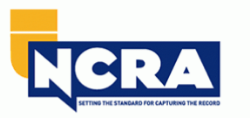Trial Presentation Recognized Experts in Courtroom Tools and Graphics
Trial Presentation Recognized Experts in Courtroom Tools and Graphics
Blog Article
Captivate the Jury: Crucial Elements of a Powerful Trial Discussion
In the world of lawful advocacy, the ability to mesmerize a court is extremely important to the outcome of a trial (trial presentation). Necessary elements such as understanding the target market, crafting an engaging story, and understanding verbal and non-verbal communication are vital parts of an effective presentation. In addition, the critical use aesthetic help can significantly improve understanding and retention of crucial arguments. As these factors intertwine, they form a cohesive approach that not just educates however likewise engages jurors on multiple levels. What details strategies can absolutely transform a conventional presentation into a remarkable experience for the court?

Comprehending Your Audience
Comprehending your audience is a pivotal facet of efficient test discussion. A successful presentation pivots on the capacity to understand the demographics, worths, and tendencies of jurors. This comprehension educates how debates are framed, proof is presented, and psychological charms are crafted, ensuring that the message reverberates with the jurors on a personal degree.
Study suggests that jurors come from diverse histories and may have varying levels of recognizing relating to lawful procedures. In addition, comprehending the jurors' potential prejudices and life experiences allows the test presenter to prepare for arguments and address worries proactively.
Reliable test presentation likewise involves observing jurors' reactions throughout the process. Being in harmony with non-verbal hints can supply insight into their engagement and understanding, enabling real-time changes in method. Eventually, a profound understanding of the target market not just improves communication yet likewise develops rapport, raising the chance of a positive result. Involving with jurors as people instead of a cumulative system is vital in cultivating a solid connection in the court room.

Crafting an Engaging Story
Crafting a compelling story is necessary in assisting jurors through the intricacies of a situation. A well-structured story not just simplifies detailed legal concepts but additionally engages jurors on a psychological degree, making the information extra relatable and unforgettable.
To accomplish this, lawyers must start by determining the core message they wish to share. This message needs to resonate with the jurors' worths and experiences, promoting a link that transcends simple facts. The story ought to unfold rationally, offering events in a clear series to avoid confusion. This sequential approach can assist jurors adhere to the progression of events, stressing cause and impact.
Incorporating human aspects-- such as individual stories or narratives-- can better enhance the narrative's influence. These components evoke empathy, enabling jurors to picture the effects of the instance on the real worlds. Additionally, using a consistent theme throughout the presentation strengthens the major argument, making it much easier for jurors to preserve crucial points.
Ultimately, a compelling narrative transforms a trial presentation from a mere recitation of facts into a persuasive story that mesmerizes the jury, motivating them to ponder with both factor official source and emotion.
Utilizing Visual Help
Incorporating aesthetic aids into a trial discussion can dramatically boost jurors' comprehension and retention of details. Aesthetic products such as graphes, layouts, a fantastic read pictures, and video clips can transform complex legal concepts and evidence right into conveniently absorbable layouts. By engaging several detects, these help permit jurors to visualize the case's essential components, making it less complicated for them to adhere to along and grasp elaborate information.
In addition, properly designed aesthetic help can emphasize critical factors and highlight partnerships between different items of evidence. Timelines can properly show the sequence of events, while annotated photos can clear up specific details appropriate to the situation. This not only aids in understanding however additionally strengthens the narrative presented by the attorney.
It is crucial, nonetheless, to ensure that visual aids matter, clear, and properly offered. Excessively complex or cluttered visuals might overwhelm jurors and diminish the message. When used deliberately, aesthetic aids offer to enhance the oral disagreements and improve the overall effect of the trial discussion. Ultimately, effective visual interaction can be a powerful device in convincing jurors and assisting them get to educated final thoughts.
Mastering Verbal Communication
Efficient spoken communication is important in a trial discussion, as it offers as the main means via which lawyers share their arguments and connect with jurors. Simpleness in language fosters understanding and aids jurors comprehend complicated issues offered during the test.
Moreover, tone and pacing considerably influence exactly how messages are obtained. A positive tone shares authority, while suitable pacing permits jurors to absorb details without feeling overwhelmed. Lawyers ought to likewise differ their vocal inflections to stress bottom lines and maintain jurors' rate of interest throughout the discussion.
Additionally, the organization of spoken arguments is necessary. Structuring about his the narrative realistically and coherently aids jurors follow the attorney's logic, making it easier for them to keep essential info. Utilizing influential techniques, such as storytelling, can additionally enhance the psychological resonance of the disagreements offered, consequently developing a more profound link with jurors.
Inevitably, grasping verbal interaction not just strengthens an attorney's situation yet also fosters count on and connection with the court, significantly enhancing the possibilities of a positive judgment.

Involving With Body Movement
Nonverbal interaction plays an important function in test discussions, usually conveying messages that words alone can not express. Body language, including motions, pose, faces, and eye call, dramatically affects just how jurors regard the trustworthiness and sincerity of the presenter. A positive stance, with shoulders back and an open position, can impart depend on, while closed-off body language might recommend defensiveness or unpredictability.

Face expressions should mirror the feelings connected with the instance, strengthening the narrative being presented. A genuine expression throughout an emotional moment can elicit empathy and reinforce the psychological charm. Eventually, grasping body language is vital for effective test presentations, as it boosts spoken interaction and develops a compelling existence that resonates with the court.
Verdict
Finally, astounding the court demands a tactical approach that encompasses recognizing the audience, crafting an engaging story, utilizing aesthetic aids, grasping spoken communication, and engaging via body movement. Each element plays an essential duty in developing an effective test discussion that resonates with jurors on both psychological and intellectual degrees (trial presentation). By incorporating these parts effectively, attorneys can substantially enhance their capability to convince and affect jury decision-making
Report this page